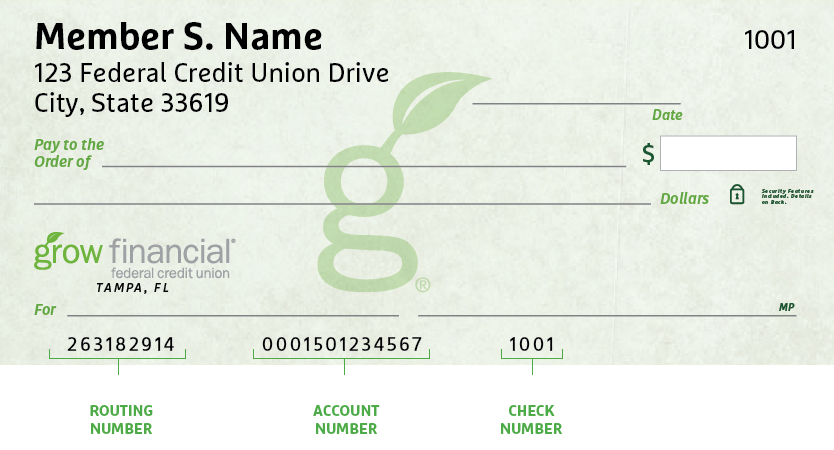- Personal
- Membership
- Membership
- Rates & Fees
- Checking
- Checking
- Personal Loans
- Personal Loans
- Wealth Management
- Investment Services
- Financial Advisors
- Resource Center
- Business

November 7, 2023
Holiday Shopping Tips: Avoid These Five Common Financial Blunders
It’s hard to believe, but the time is here. Let’s talk about holiday spending. We’ve got holiday shopping tips to share that will keep the season of cheer from becoming a big pain in the wallet. Watch out for these five holiday shopping blunders that can set you back financially:
1. Not setting a budget
Have you remembered to plan ahead for your holiday spending? According to the NerdWallet annual holiday shopping survey, which surveyed more than 2,000 U.S. adults, consumers expect to spend $831 on average over the holidays in 2023.1 Don’t go into the holiday season prepared to freestyle your spending, or you may end up spending more than you thought you would. Instead, set a realistic holiday spending budget that fits into your financial plan. (New to budgeting? Learn how to get started with budgeting basics.)
2. Ignoring your budget
A budget’s only as good as your willingness to stick to it. It’s easy to be swept up into spending beyond your means during a time when you want to be generous and show love to others. Don’t let your heart run away with your head, leaving you stressed about finances in the coming months.
If you need to spend less on gifts this year, that’s perfectly alright! Setting expectations with friends and family ahead of time can help ease any apprehension you might have about overspending. In fact, you’ll be in good company because 26% of consumers plan to discuss limiting holiday gift spending with their friends and family this year.1
3. Taking on debt
Overspending our budgets, paying high interest and taking on too much debt often go hand in hand. Nearly three-quarters (74%) of shoppers plan to use credit cards to pay for holiday gift purchases. Meanwhile, nearly one-third of people who shopped with credit cards last holiday season are still working to pay off those balances.1 Plus, buy now, pay later options are becoming increasingly popular. It’s possible to include credit cards and buy now, pay later services in your holiday budget — we love rewards points too! — but it’s also important to use caution and plan your payback strategy effectively to avoid high-interest debt.
Stuck paying high interest already? Consider consolidating to a lower monthly payment with zero balance transfer fees with a Grow Visa® Preferred Credit Card.2 Learn more.
4. Falling for scams
As the weather cools, our hearts warm with holiday cheer. Do you know who’s also feeling cheerful this time of year? Scammers. From online shopping scams to fake charitable organization scams, scammers have tricks up their sleeves and hope to lure you into divulging personal information or sending them money.
It’s important to be vigilant to avoid fraud, especially around the holidays, when fraudsters look to exploit your goodwill. Learn more about how to avoid common holiday scams.
5. Forgetting what really matters
When it comes to sharing joy, the best memories come from the heart, not the wallet. Create memories with experiences, like a family board game night, neighborhood scavenger hunt or video game tournament. If you’re choosing to participate in the gifting season, remember that gifts don’t have to be expensive to be meaningful. Thoughtful things like acts of service, homemade treats or heartfelt notes can be even better gifts than store-bought items.
1NerdWallet. 2023 Holiday Shopping Report. Accessed October 18, 2023. https://www.nerdwallet.com/article/shopping/2023-holiday-shopping-report
2Subject to credit approval. Introductory Rate as low as 1.99% to 4.99% APR. The introductory rate is effective for the first six billing cycles for purchases and balance transfers. After the introductory period expires, or if you do not qualify for an introductory rate, your standard APR will range between 12.24% and 17.49% for purchases and balance transfers. This is a variable rate. The rate you receive will be based on your creditworthiness. This rate will vary with the market based on Prime Rate as published in the Wall Street Journal “Money Rates” table on the last day of each calendar month. The APR will not exceed 18.00%. If the minimum monthly payment is 60 days late twice in a 12-month period, the rate will revert to a default rate of 18.00% for six (6) billing cycles. Other APRs: Cash Advances 18.00%, Overdraft to Share Account 18.00%. A finance charge of 1.00% will be charged on foreign transactions. Rates are effective as of publishing this piece and could change without notice. Annual Percentage Rate (APR).
Posted In:
How to Find Your Routing & Account Numbers
When you make a payment online, by phone or on a mobile device, you may be asked for our routing number and your checking account number. Credit unions and banks use these numbers to identify accounts and make sure money gets where it’s supposed to be. You’ll also need to provide your routing and checking account numbers for:
- Direct deposits
- Electronic checks
- Military allotments
- Wire transfers
Where to Find Your Routing & Checking Account Numbers
Your personal checks include both our routing number and your account number, as shown on the Grow check example below.

Don’t have a Grow check? No worries.
Visit any Grow store and ask for a Direct Deposit Form. It lists both your routing number and checking account number.
Making a Loan Payment
Incorrect Phone Number Alert
We’ve identified an incorrect phone number listed in a letter sent to a select group of new members with auto loans. The incorrect number is NOT affiliated with Grow. Please be sure to use our official phone number, 800.839.6328, which you can verify on our Contact Information page. For your security, keep your personal information safe and avoid sharing it over the phone, email or text message. We will never ask you for your credit or debit card security code, expiration date or PIN, login security codes, or your online banking password.
When it comes to making payments, we try to make it as painless as possible to pay your loan every month. We have several different ways to pay, including convenient online options.
Pay Online
You have two ways to pay online by transferring funds from another bank or credit union.
- Grow Online Banking (Preferred payment method for any loan)
This is the simplest way to pay your loan. You can make one-time payments or set up automatic recurring payments in Grow Online Banking. Once you log in, select “Transfer/Payments” from the menu. If you’re not enrolled in Grow Online Banking yet, you can set up your account in just a few minutes.
Log In
- Debit Card or ACH (Available for auto, personal loans and HELOCs)
Note: ACH and debit card payments are not available for credit cards or most mortgages, except HELOCs.
We accept ACH payments with no additional fees, consumer Mastercard® and Visa® debit cards with a convenience fee of $4.95, or commercial Mastercard® and Visa® debit cards with a convenience fee of 2.95% of the payment amount. To get started with an online ACH or debit card payment, select Pay Now below.
Pay Now
Pay by Mail
You can also pay any Grow loan by check through the mail. Please remember to include your account number and Grow loan number on the check. (For credit card payments, please do not write your 16-digit credit card number on the check, which can cause a delay in processing the payment.)
Address for auto, credit card, personal loan and HELOC payments:
Grow Financial Federal Credit Union
P.O. Box 75466
Chicago, IL 60675-5466Address for personal first or second mortgages and home equity payments:
Grow Financial Federal Credit Union
P.O. Box 11733
Newark, NJ 07101-4733You Are About To Leave GrowFinancial.org
At certain places on this site, there are links to other websites. Grow Financial Federal Credit Union does not endorse, approve, represent, certify or control those external sites. The credit union does not guarantee the accuracy, completeness, efficacy, timeliness or accurate sequencing of the information contained on them. You will not be represented by Grow Financial Federal Credit Union if you enter into a transaction. Privacy and security policies may differ from those practiced by the credit union. Click CONTINUE if you wish to proceed.
